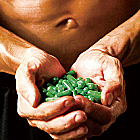 Testosterone, growth hormone and insulin are the three primary anabolic hormones in the body. That explains why, when used in drug form, the combination of anabolic steroids, GH injections and insulin injections plays a major role in producing the massive physiques that are commonly seen in the ranks of professional bodybuilding.
Testosterone, growth hormone and insulin are the three primary anabolic hormones in the body. That explains why, when used in drug form, the combination of anabolic steroids, GH injections and insulin injections plays a major role in producing the massive physiques that are commonly seen in the ranks of professional bodybuilding.
Of course, exercise, diet and genetics also enter the success equation of championship bodybuilding. For many, however, the drug route is unacceptable. Whether for moral or health reasons, many bodybuilders want to build muscle and strength without using any anabolic drugs. So for natural bodybuilders, as they’re called, manipulation of the anabolic hormones in the body, along with control of the primary catabolic factors, such as cortisol and myostatin, are the primary goals. You can, in fact, manipulate these hormones with diet and supplements to a great extent.
Supplements touted to boost growth hormone release have been popular for years. The genesis of nutritional manipulation of GH probably began in the early 1980s, with the publication of the book Life Extension, by Durk Pearson and Sandy Shaw, who discussed the oral intake of the amino acid arginine as a way of boosting natural GH release. Around the same time a study was published that featured young men who exercised on a stationary cycle but also took 1,200 milligrams each of L-arginine and L-lysine. The combination upped GH release by more than 300 percent above baseline. Not surprisingly, supplements touted to increase GH release containing L-arginine came on the market.
One study of arginine showed that a dose of 250 milligrams per kilogram of bodyweight for one week given to five young men increased the slow-wave sleep release of GH by 24 percent (GH is secreted at maximum levels during stage-4, or slow-wave, sleep). The problem here is that the dose is massive—more than 22 grams of arginine. Studies that show an arginine-based release of GH via the intravenous route use an average dose of 30 grams. Taking more than 10 grams of oral arginine at once often results in nausea.
Other studies have shown that a combination of arginine and acetyl-L-carnitine can also boost GH. Other amino acids, including L-tryptophane, have led to increases in GH as well. One study showed that a dose of three grams of GABA, an amino acid product, increased both resting and exercise-related GH release. The problem here is that GABA is the primary inhibitory neurotransmitter in the brain, which means that it slows down brain function. In fact, most prescription sleeping pills are based on interactions with GABA receptors in the brain. Clearly, taking in something that puts you to sleep would not make for a very intensive training session.
A recent study featuring 15 young men, all of whom had weight-training experience, examined the effects of a combination of two natural ingredients touted to boost GH.1 The active ingredients in the supplement were an herb called Chlorophytum borivilianum and velvet bean extract. Chlorophytum borivilianum is an herb popular in Ayuvedic medicine, which has brought us some other useful herbs, such as guggulesterone.
Chlorophytum borivilianum is alleged to boost immune response, help prevent cancer, reduce joint pain and even work as an aphrodisiac. It may also lower fats in the blood, which would have a beneficial effect on GH release. Velvet bean has previously been used in supplements to boost GH. The key to velvet bean is its content of L-dopa, an amino acid that is converted in the body into dopamine, a major brain neurotransmitter. Many of the current stimulant supplements work by also boosting dopamine in the brain, which stimulates work output and produces an energized feeling. It’s no coincidence that both cocaine and methamphetamine also boost brain dopamine. L-Dopa itself has been shown in several studies to have the ability to boost GH release.
The subjects took the supplement on two different days, separated by one week. The researchers collected blood from the men before they took the supplement and at 20, 40, 60, 80 and 120 minutes after they took it. The results showed a gradual rise in GH, with increases at the 60-, 80- and 100-minute marks, but there was also a great amount of variability in the response of the subjects, with some of the men producing far more GH than others.
Various factors could explain such differences, such as bodyfat levels, age and exercise intensity, although how those factors may have affected the supplement response wasn’t discussed in the study. In addition, the capsules used in the study varied in their inactive-ingredients content, which also could have affected the response. The men took three capsules of the supplement, which provided 2,250 milligrams of the active two ingredients.
While the supplement did appear to increase GH under resting conditions, there were several weaknesses in the study. For one, there was no placebo group, or group of subjects who got an inert version of the supplement as a means of eliminating placebo-generated effects. Simply put, many supplements produce effects because the people who take them believe that they will. It may not actually be that the supplement is active but rather that the user’s staunch belief in the effectiveness of the supplement produces the effects. It’s estimated that more than 40 percent of drugs actually work through the placebo effect.
Another issue is whether the extent of GH release produced by the supplement would actually induce an anabolic effect in muscle. That’s important, since many studies show that even pharmaceutical versions of GH produce little or no anabolic effects in people whose bodies are still releasing GH. Body composition changes do occur, however, when GH is given to those deficient in it.
Another notable problem related to the study was the lack of an exercise component, a flaw recognized by the authors. Exercise itself can produce significant rises in GH, particularly if the exercise involves high intensity, large-muscle-group work. Past studies with L-arginine have shown a paradoxical effect in that a preworkout dose of arginine not only didn’t boost GH but actually lowered the usual exercise-related GH release as well. Arginine seemed to work better in that regard if taken when the subjects were in resting conditions rather than prior to exercise. Whether this supplement would produce similar effects is not known.
The final problem with the study is that it involved only young men with an average age of 23, an age when GH is more readily stimulated through nutritional factors. Whether the supplement can similarly affect older people and women isn’t known, although younger women are known to produce higher GH peaks during exercise than men because of their higher estrogen levels.
One other factor that must be considered is that the study was sponsored by a company that sells the two tested ingredients in supplement form. While it’s admirable that a company is willing to sponsor a study to test the effectiveness of its products, there is always the issue of commercial bias looming in such a study. Studies that are conducted independently may offer more subjectivity.
Editor’s note: Jerry Brainum has been an exercise and nutrition researcher and journalist for more than 25 years. He’s worked with pro bodybuilders as well as many Olympic and professional athletes. To get his new e-book, Natural Anabolics—Nutrients, Compounds and Supplements That Can Accelerate Muscle Growth Without Drugs, visit www.JerryBrainum.com. IM
1 Alleman, R.J., et al. (2011). A blend of Chlorophytum borivilianum and velvet bean increases serum growth hormone in exercise-trained men. Nut Metab Insights. 4:55-63.













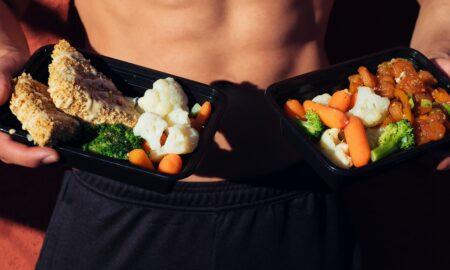
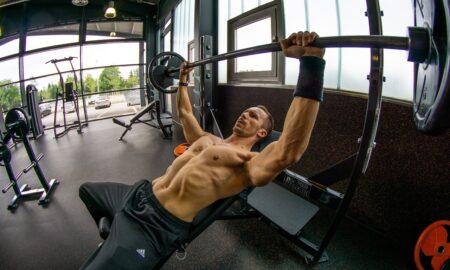
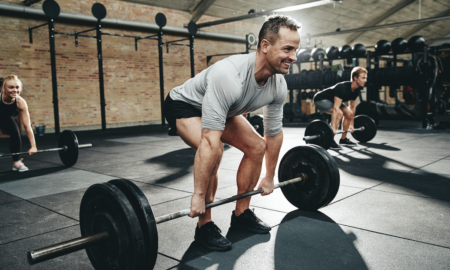
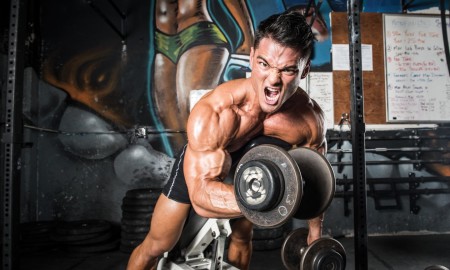

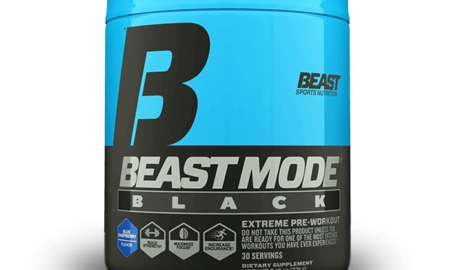
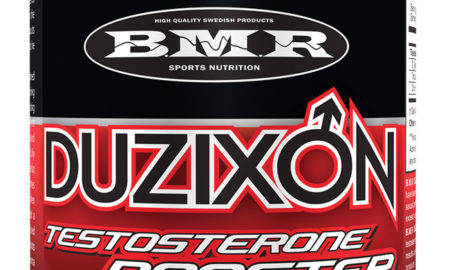
You must be logged in to post a comment Login